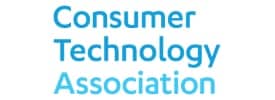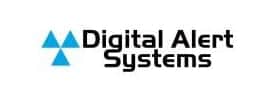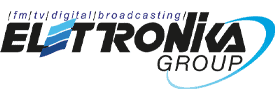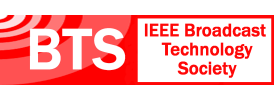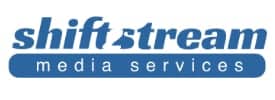- About
- Members
- Sponsors
- Subcommittees
- About Our Subcommittees
- Technology Group 3
- Implementation Team 1 – Advanced Emergency Information
- Implementation Team 2 – India
- Implementation Team 3 – ATSC 3.0 Conformance
- Implementation Team 4 – Brazil
- Implementation Team 5 – Tower Network
- Implementation Team 7 – Caribbean
- Implementation Team 8 – Automotive
- Planning Team 4 – Future Broadcast Ecosystem Technologies
- Planning Team 5 – Automotive Applications
- Planning Team 6 – Global Recognition of ATSC 3.0
- Planning Team 9 – Sustainability
- Technical Documents
- News
- Events
- Spotlight ATSC 3.0
- Contact Us
- Member Login
- Member Meetings
- Advanced Search
Search Site
Member Links
- About
- Members
- Sponsors
- Subcommittees
- About Our Subcommittees
- Technology Group 3
- Implementation Team 1 – Advanced Emergency Information
- Implementation Team 2 – India
- Implementation Team 3 – ATSC 3.0 Conformance
- Implementation Team 4 – Brazil
- Implementation Team 5 – Tower Network
- Implementation Team 7 – Caribbean
- Implementation Team 8 – Automotive
- Planning Team 4 – Future Broadcast Ecosystem Technologies
- Planning Team 5 – Automotive Applications
- Planning Team 6 – Global Recognition of ATSC 3.0
- Planning Team 9 – Sustainability
- Technical Documents
- News
- Events
- Spotlight ATSC 3.0
- Contact Us
- Member Login
- Member Meetings
- Advanced Search
A/153 Parts 1 – 10, ATSC Mobile DTV Standard
Posted on March 31, 2015 in
The ATSC Mobile DTV Standard defines the technical specifications necessary for broadcasters to provide new services to mobile and handheld devices using their digital television (DTV) transmissions. The new services for mobile and handheld devices are carried along with current DTV services without any adverse impact on legacy receiving equipment. ATSC Mobile DTV was developed […]
A/110, ATSC Standard for Transmitter Synchronization
Posted on March 31, 2015 in
This document defines a standard for synchronization of multiple transmitters emitting trellis-coded 8-VSB signals in accordance with ATSC A/53 Part 2 and of both single and multiple transmitters emitting Mobile DTV signals in accordance with ATSC A/153 Part 2. The emitted signals from transmitters operated according to this standard comply fully with the requirements of […]
A/104 Parts 1 – 6, ATSC 3D-TV Terrestrial Broadcasting
Posted on March 31, 2015 in
The ATSC 3D-TV suite of standards is organized in a series of Parts based on deployment architecture. A/104 Part 1 and its normative Parts provide detailed specification of the parameters of the 3D-TV system including the video encoder input scanning formats and characteristics of the service multiplex and transport layers. Download A/104 Part 1:2014, “3D-TV […]
A/103, Non-Real-Time Delivery
Posted on March 31, 2015 in
This Standard describes the ATSC Non-Real-Time Content Delivery system, hereafter referred to as the ATSC NRT system or simply NRT. The NRT system provides support for delivery of content in advance of use (i.e., not streaming content). These ATSC-NRT services are carried in DTV broadcast multiplexes. The presence of these services do not preclude or […]
A/100, DTV Application Software Environment – Level 1 (DASE-1)
Posted on March 31, 2015 in
The DASE-1 Standard defines a software layer (middleware) that allows programming content and applications to run on a so-called common receiver. Interactive and enhanced applications need access to common receiver features in a platform-independent manner. This environment provides enhanced and interactive content creators the specifications necessary to ensure that their applications and data will run […]
A/99, Carriage Of Legacy TV Data Services
Posted on March 31, 2015 in
This supplementary standard establishes how to transport certain data services that are sent by some broadcasters. These services may be sent over NTSC using lines in or near the Vertical Blanking Interval or in digital video using VANC. The method for encapsulating some of these services has been defined in SCTE 127. Download A/99:2008, “Carriage […]
A/98, System Renewability Message Transport
Posted on March 31, 2015 in
This document defines the method for transport of System Renewability Messages. A System Renewability Message (SRM) is a message issued by the administrator of a Content Protection System (CPS) that, when sent to devices that use that CPS, can revoke permission of certain devices or groups of devices to obtain content protected by that CPS. […]
A/97, Software Download Data Service
Posted on March 31, 2015 in
This document specifies a data service that may be used to download software to a terminal device using an MPEG-2 Transport Stream via an appropriate physical layer. This service may be used to effect updates or upgrades of firmware, operating system software, device driver software, native application software, middleware, and other types of software that […]
A/96, ATSC Interaction Channel Protocols
Posted on March 31, 2015 in
This standard defines a core suite of protocols to enable remote interactivity in television environments. Remote interactivity requires the use of a two-way interaction channel that enables communications between the client device and remote servers. Examples of remote interactivity include E-commerce transactions during commercials, electronic banking, polling, email services, or other services yet to be […]
A/95, Transport Stream File System Standard
Posted on March 31, 2015 in
This document defines the ATSC Transport Stream File System (TSFS) standard for delivery of hierarchical name-spaces, directories and files. This standard builds on the data service delivery mechanism defined in the ATSC Data Broadcast Standard, A/90. Download A/95:2003, “Transport Stream File System Standard”, approved 25 February 2003.
News Categories
News Archives
Subscribe
Subscribe to The Standard, our monthly newsletter. Learn More
Join ATSC
ATSC is a membership organization with both voting and observer categories. Voting members include corporations, nonprofit organizations, and government entities, and they participate actively in the work of ATSC. Observers are individuals or entities not eligible to be a voting member.
Subscribe to our Newsletter
Subscribe to The Standard, our monthly newsletter, to stay up-to-date with ATSC news and events around the world.
Site Links
Contact Us
Advanced Television Systems Committee, Inc.
1300 I Street NW, Suite 400E
Washington, DC 20005
Do you have questions about ATSC?
About ATSC
The Advanced Television Systems Committee, Inc., is an international, non-profit organization developing voluntary standards and recommended practices for digital terrestrial broadcasting. ATSC member organizations represent the broadcast, broadcast equipment, motion picture, consumer electronics, computer, cable, satellite, and semiconductor industries. ATSC also develops digital terrestrial broadcasting implementation strategies and supports educational activities on ATSC standards.
© 2024 ATSC












